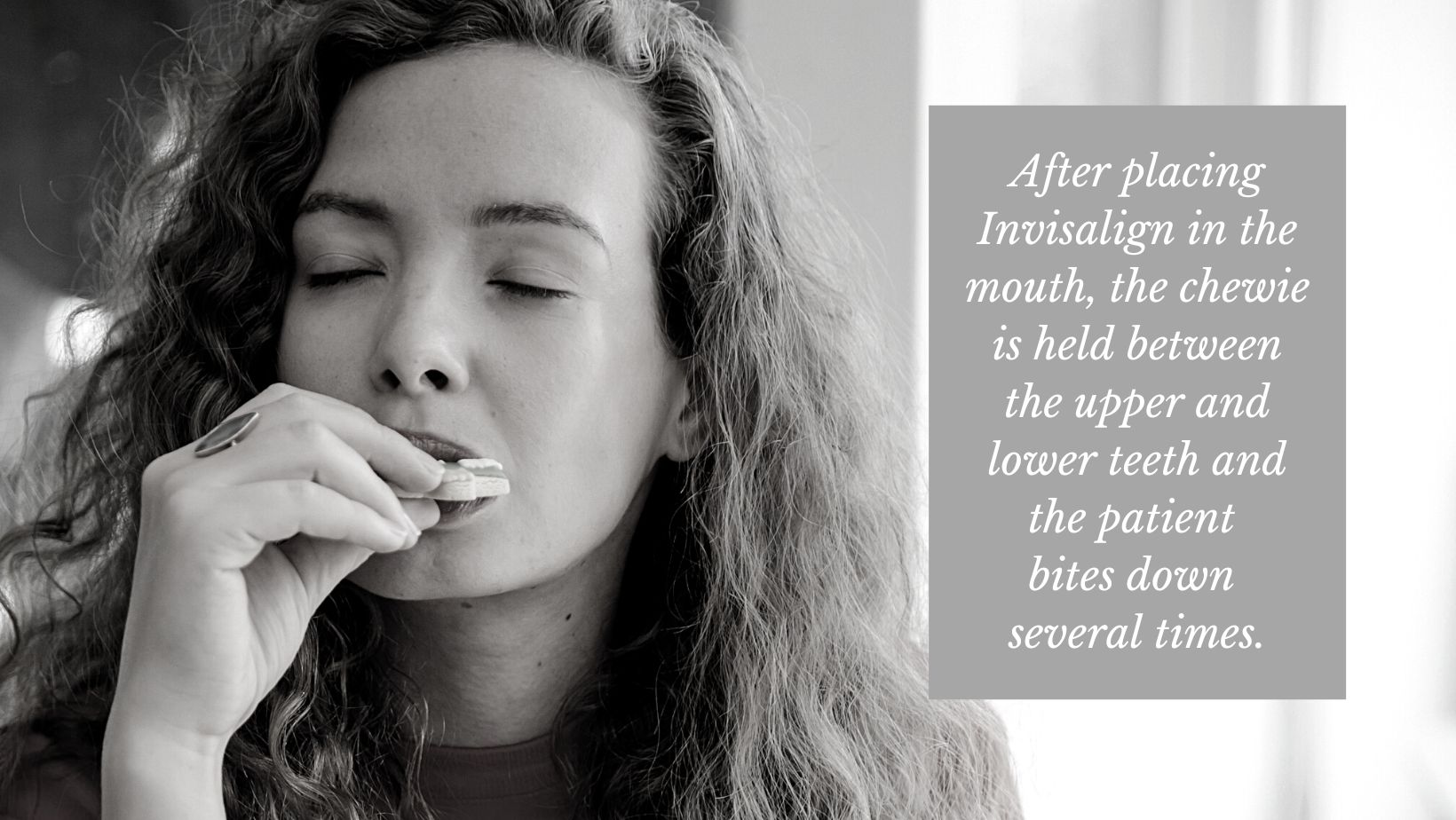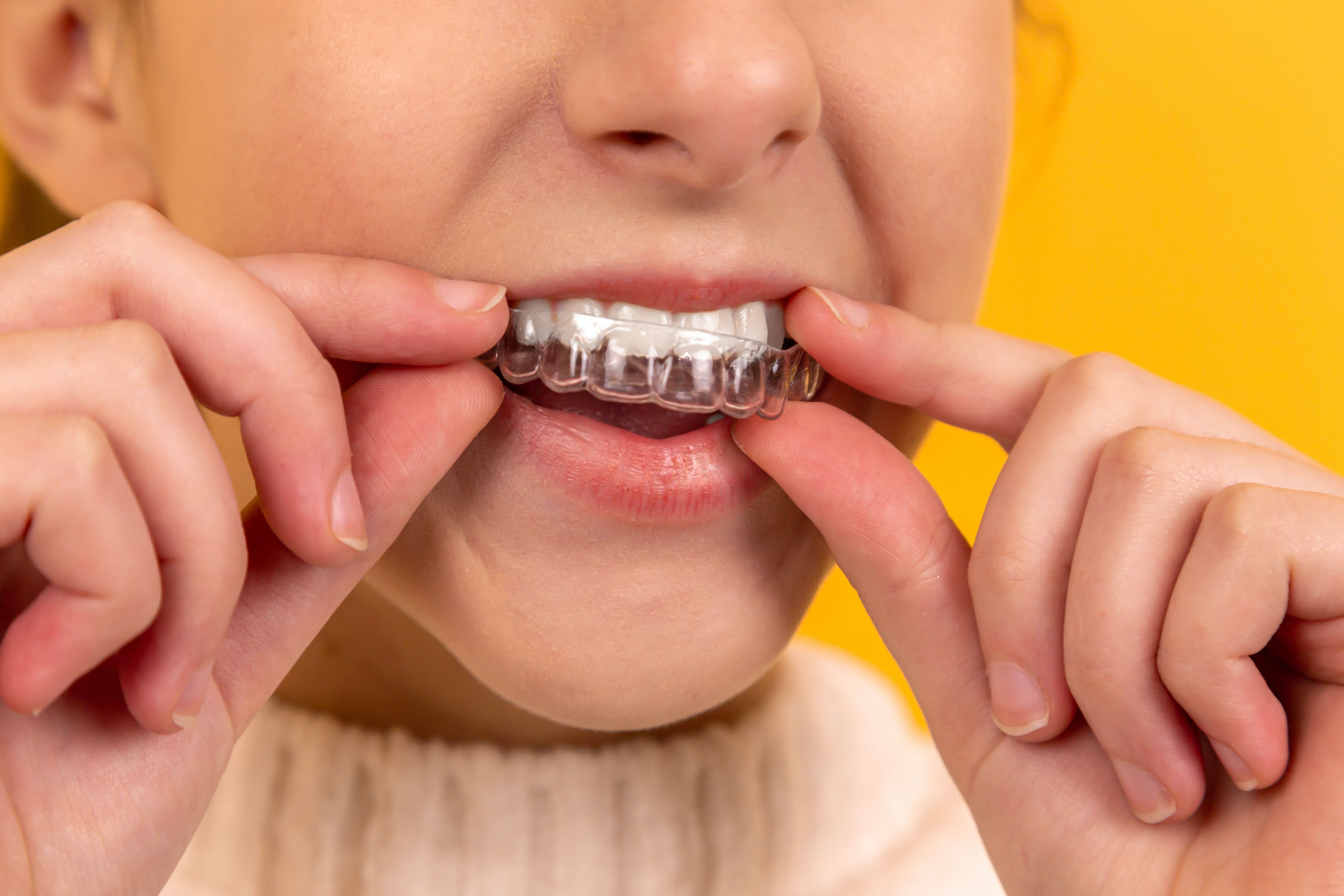As successful as Invisalign is at straightening teeth, the plastic aligner trays sometimes need a little help. For example, dentists may place Invisalign attachments or buttons onto the teeth to provide leverage, giving the trays something to push against.
Another common accessory is called a dental aligner seater. These are small devices that help the trays fit better. One popular product is called a “chewie.” Do chewies really help Invisalign work better? While they might not necessarily speed up treatment, they are beneficial.
What Do Invisalign Chewies Do?
Invisalign chewies are short, flexible plastic cylinders. Picture a miniature pool noodle that is about an inch long. They come in a plain variety or with mint, bubblegum, or other scents. By biting down on the chewie, a patient pushes their Invisalign tray more firmly onto their teeth.
Aligner trays depend on a snug fit to provide enough force to move teeth into position and chewies can help. If Invisalign is not seated correctly, it might not be as effective. Worse, when trays sit crookedly on the teeth, they can potentially move them in the wrong way.
Some people have luck seating their Invisalign aligners by simply pushing them onto the teeth or biting down. But many have trouble getting them to “click” into place, especially when they put on a brand new set of trays every few weeks. A better fit is possible with an aligner seater.
How to Use and Care For Chewies
Chewies can be used every time a person puts their aligner trays in their mouth, or just occasionally, as needed. Some patients only use them when transitioning to a new pair of trays, or when they notice that their Invisalign is not sitting properly on their teeth.
Using a chewie is simple. After placing Invisalign in the mouth, the chewie is held between the upper and lower teeth and the patient bites down several times. They then move on to the next tooth. The process is repeated across the entire arch of the teeth. Most people begin with the last molar on one side and work their way around to make sure that every tooth gets its turn.

If the patient takes their time and does not rush, the entire procedure should take about five minutes. Some dentists and orthodontists recommend using chewies for five minutes twice a day.
Patients can use a chewie several times before throwing it away but should clean it after each use. The same products that are recommended for cleaning trays are also safe for chewies. When the tube starts to lose its elasticity, it is time to switch to a new one. Just like the aligners themselves, storing them properly will keep chewies clean and safe until they are needed again.
A dentist might offer samples of chewies to patients who can benefit from them. They are also available at drug stores and online for a reasonable price. A pack of ten chewies typically costs less than $7.
Pros and Cons of Invisalign Chewies
The biggest advantage of chewies is getting Invisalign to fit better on the teeth, removing any spaces or air gaps. Poorly seated trays can interfere with Invisalign’s progress. So while chewies may not make it go faster, they can keep the treatment plan on track.
Chewing on the devices can also stimulate the tissues around the tooth roots. This can help with the straightening process by making the teeth more ready to move in the jaw.
Most patients have occasional discomfort with Invisalign. Treatment requires new trays every two weeks, and the first few days of adjusting to a new set can be painful. During these times, biting down on a chewie might be difficult and painful too. The teeth and jaws might be more sore and tender than normal. This typically goes away within a day or two as the patient becomes used to the trays. In the meantime, over-the-counter pain medications can help.
Holding one end of the chewie while biting down on the other is the recommended way of using the product. Some patients simply put them in their mouths and chew on them like gum. Doing this can pose a choking hazard. It is also possible to miss biting down in certain parts of the mouth, which could defeat the purpose.
Aside from these occasional, minor issues, chewies are a safe effective way to seat Invisalign trays when used properly.
Dental Aligner Seater Alternatives
Some might wonder why it is necessary to buy a device, as opposed to simply chewing on some other item to seat their Invisalign. For example, wouldn’t a pen or pencil work just as well?
Just as patients should not eat with Invisalign trays, chewing on anything other than an item designed for this purpose is strongly discouraged.
While Invisalign trays are durable, it is possible to scratch, crack, or break them. Chewies and other dental aligner seaters are approved specifically for this use.
There are alternatives to chewies available, marketed under different brand names:
Munchies have a 3-pronged design and come in different levels of firmness. Because of their shape, they might be easier to hold while biting.
Movemints are a minty, edible option. Their shape fits neatly between teeth as the patient bites down. Not only will they freshen breath while doing their job, but there is also nothing to clean or store between uses.
Invisalign Chewies: A Helpful Tool for Treatment
Not everyone needs to use an Invisalign seater tool, but just about everyone can benefit from one. The important thing is to get the best possible fit for the trays, and chewies are an inexpensive, easy tool for the job.
If your Invisalign doesn’t feel quite snug enough, ask the dentist if a seater tool like chewies will help. They may have a specific recommendation for a brand and procedure that is best for you. If you want to find a dentist to discuss getting Invisalign, use our online search tool to find a provider near you.


